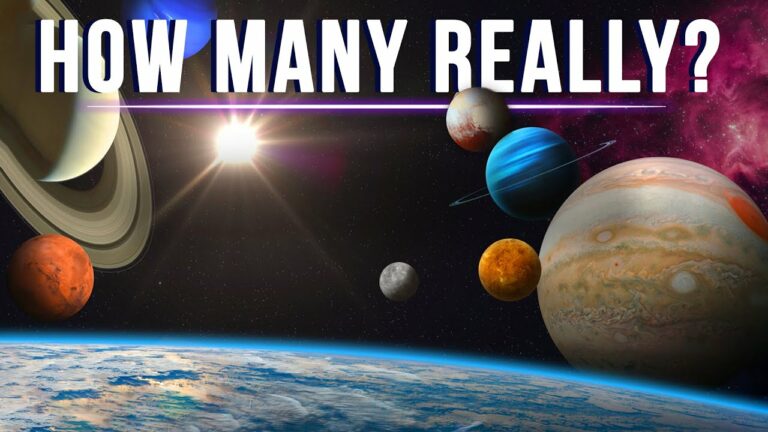How Many Planets Are There REALLY In The Solar System?
If I asked you to imagine our solar system, you would think about the big posters that we are used to looking at since we were little kids, wondering about the mysteries of the universe.
You might think about Jupiter, with its orange and brownish colors and its intriguing features on the surface, or you might think about Saturn with its beautiful rings, or Earth, with its blue oceans.
But what if… I asked you how many planets are there in the solar system?
The straightforward answer would be 8, of course.
I mean, those posters are quite clear. We go from Mercury to Neptune.
But turns out that the planets are eight…only because of the formal definition of the planet that we adopt.
For example, if we go back to 2005, Pluto was still considered a planet, therefore posters before that date would present the solar system as formed by 9 planets, instead of 8.
It’s crazy if you think about how our understanding of the universe modifies the semantics we use, and how the semantics in turn change the vision we have of reality. For example, if we defined planets as any object with an almost perfect triangular shape, the number of planets in the solar system would be…zero!
Anyway, we were saying that, by definition, in the solar system there are only 8 planets.
By definition, there are three rules to define a planet:
1. It should have a mass such that its surface is a sphere. In fact, gravity acts upon objects with a given mass, and if the object is massive enough it is going to become spherical in shape, gravity being the same in all the directions and pushing inwards towards the center of the body. An object that’s too small to become a sphere, cannot be classified as a planet.
However, this is not a so-sharp definition, because the variety of objects and masses and shapes is kind of continuous in our universe, and therefore there might be a “grey zone” in terms of mass, where it is difficult to tell if the object we are facing can be classified as a planet in these terms or not. For example, there could be some objects really similar to planets, but with a slightly less amount of mass than is needed for gravity to give it the needed spherical shape.
So, in simple terms, if an object exists that orbits around the sun, but is not enough massive to have a spherical shape, I’m sorry to inform you that..it can’t be classified as a planet.
The second rule is: that in order for an object to be a planet, it should be orbiting around the Sun.
2. Of course, we are talking about our solar system, but, more in general, an object could be defined as a planet if it orbits around its host star. In this case, however, we would be talking about exoplanets, like the ones that have been studied and discovered by the Kepler mission, and not about PLANETS. So as you can understand, the only real PLANETS are the eight ones in our solar system.
3. The third requirement is that the planet must be dominating its neighborhood.
This basically means that it should be the biggest object along its own orbit, but the things here are a bit complex. For example, Pluto doesn’t satisfy this last requirement, because, at a certain point along its orbit, it crosses the orbit of Neptune, and therefore it is no longer the main object dominating its own orbit. It is all matter of orbits and laws of physics.
Do not forget to share your opinion with us to provide you with the best posts !




0 Comments